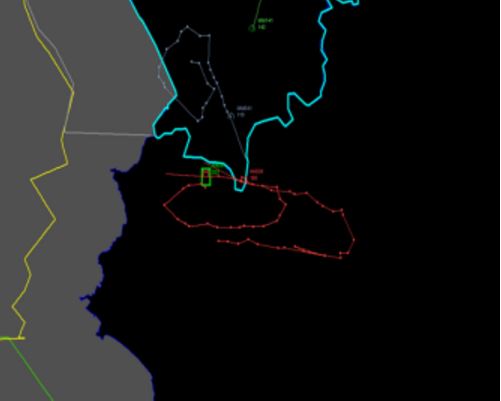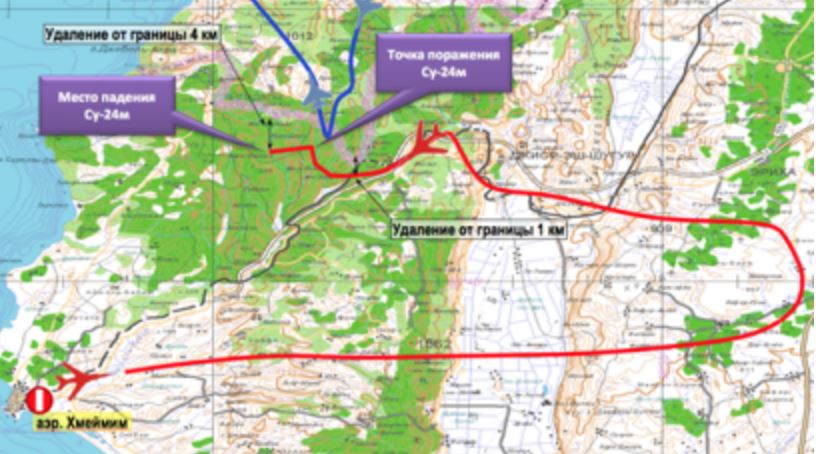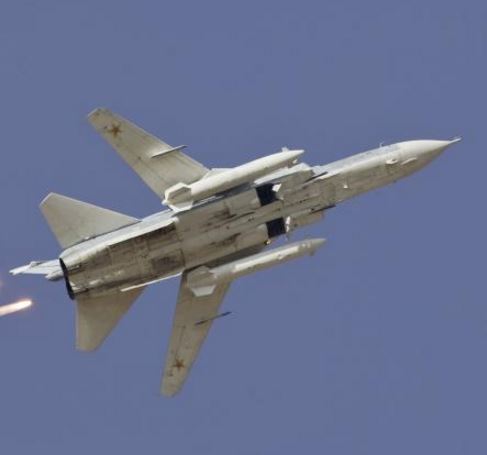The shot Russian plane is unlikely to have met its unfortunate fate according to the official accounts issued by Turkish and Russian authorieis, say two Belgian astrophysicists from the Katholieke Universiteit Leuven (also known as the University of Leuven), who described the Russian version as ‘scientific nonsense’.
Writing in their university’s blog (in Flemish), Dr Giovanni Lapenta and Dr. Tom van Doorsslaere insisted that the Russian all-weather bomber aircraft could not have gone down the way either Turkey or Russia said it had.
The Russian warplane, an Su-24 aircraft, was shot down by Turkish authorities on Tuesday and crashed in a village in Latakia province in Syria, a few miles from the border.
 The card which Turkish authorities distributed. (Image: https://kuleuvenblogt)
The card which Turkish authorities distributed. (Image: https://kuleuvenblogt)
Turkey says it gave 10 warnings
According to Turkey, it gave the Russian plane ten warnings about violating its airspace before firing. Russia says the Turkish version is absolute ‘rubbish’.
Dr. Lapenta and Dr. van Doorsslaere watched a video of the incident that had been posted on the Internet and said that according to their calculation, the Su-24 fighter aircraft had been travelling faster than Turkey said it was.
The official Turkish version claims the Russian plane was in Turkish airspace for 17 seconds. However, the astrophysicists calculated that when travelling at 609 miles per hour (980 kph), the plane would have left Turkish airspace in just seven seconds.
Their calculations show that it was ‘extremely unlikely’ that Turkey could have issued ten warnings in five minutes, because the plane travelling at that speed could cover 50 miles (80 kilometres) in 80 seconds.
Dr. Lapenta and Dr. van Doorsslaere said:
“How could the Turkish airforce predict that the Russian jets were about to enter Turkish airspace? Military jets are very agile, and in theory the Russian jets could have turned at the last moment to avoid Turkish airspace.”
“The warnings issued to the Russian pilots were mere speculation at the moment they were made.”
 The card which Russian authorities distributed. (Image: https://kuleuvenblogt)
The card which Russian authorities distributed. (Image: https://kuleuvenblogt)
Russian version ‘scientific nonsense’
The two scientists added that the Russian version was not completely honest either.
According to the official Russian version, their plane made a 90 degree turn after being hit by the missile and was actively trying to avoid flying into Turkish airspace.
The two scientists say that a change of course of 90 degrees is only possible with an object that is considerably heavier and faster than a jet – “many times heavier and faster than the jet.”
The scientists wrote, regarding the Russian version stating that a 90 degree turn was made:
“This is scientific nonsense: the direction of the plane can only change if a force is applied to it. The momentum (mass times velocity) of the rocket and the explosion is many times smaller than the momentum of the jet, and can therefore only produce a small change in direction during the collision.”
They concluded:
“According to our calculations, it is clear that both the story of Turkey and Russia should be taken with a grain of salt. Estimates limit the violation of Turkish airspace to a maximum of 10s. Russia’s claim that the jets prevented Turkey does not correspond to the laws of mechanics.”
The Sukhoi Su-24, which in NATO reporting is called ‘Fencer’, is a supersonic, all-weather bomber aircraft developed in the Soviet Union. It was the first of the Soviet Union’s aircraft to carry an integrated digital navigation/attack system. It has been part of the USSR’s and Russia’s air force since 1967.
Video – Russian fighter plane shot down

